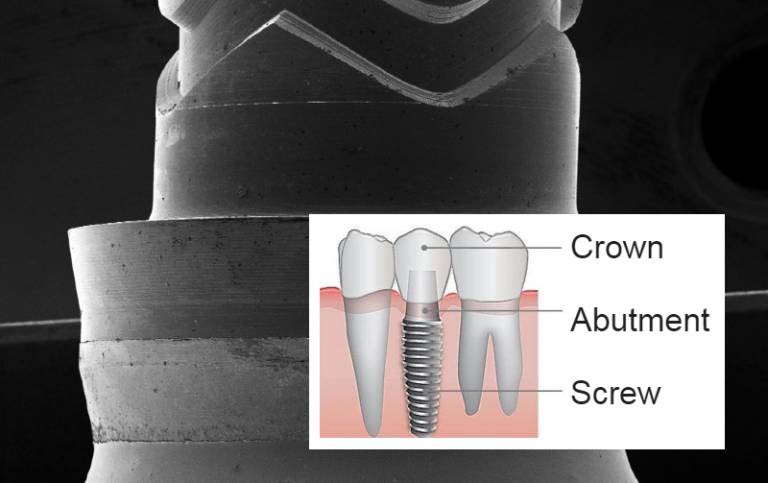New grant to investigate compatibility of non-original implant components
1 July 2020

Our Prosthodontics Team are celebrating the receipt of a new $4000 grant to investigate the compatibility of non-original components within dental implants.
Postgraduate Dr Naureen Rizvi received the award from the International College of Prosthodontics to examine whether the shape of certain abutments affects their efficacy.
The abutment is the link between the implant screw and the replica tooth.
It is hoped that the findings will reduce the use of inappropriate components and ultimately improve patient experience.
Head of Prosthodontics, Professor Lambis Petridis said “Many prosthodontists and implant dentists inevitably use non-original components – that is, components not manufactured by the original parent company.
“These are often cheaper and easier to obtain but the fit can be less concise.
“By testing non-original abutments against originals this study hopes to show the degree to which some non-originals are unsuitable and ultimately improve guidance as to their use.”
The study will build on previous systematic reviews done within the Unit which suggested that differing abutment shape may influence changes in the gap at the screw-abutment interface.
Dr Rizvi will work with our Biomaterials & Tissue Engineering Department to measure precision of fit using scanning electron microscopy.
Clinical conditions will also be simulated with cyclical loading to investigate behaviour such as load to fracture, and failure modes or complications such as connection screw loosening.
Dr Rizvi said: “We hope to find out whether the type of connection affects precision of fit at the implant-abutment interface, fracture resistance and failure modes, and whether certain combinations of componentry present more favourable outcomes.
“We believe the project has the potential to improve the quality control of these medical devices as well as enhance longevity of restorative dentistry, oral function and patient quality of life.
“In the future, it is hoped that the project will pave the way for formation of guidelines, component registry, and in-vivo studies.”
 Close
Close




